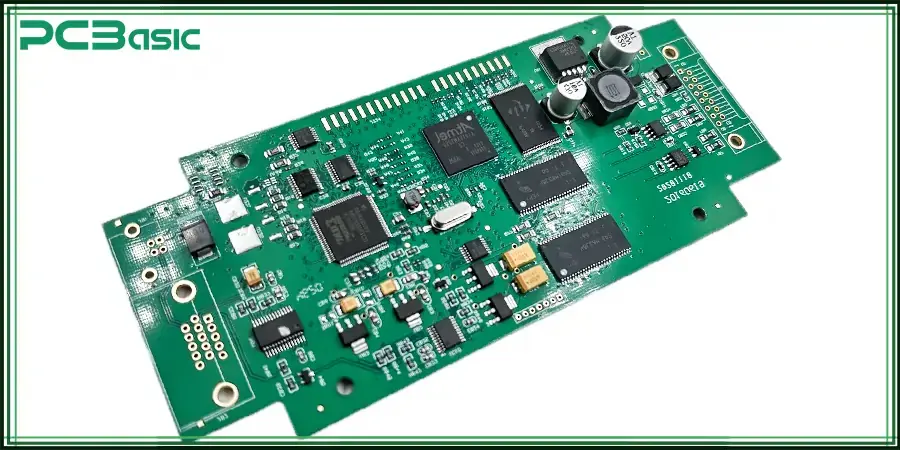In the smartphone industry, every millimeter of space matters, and so does every electronic component that powers the device. Two terms that often confuse people are PCB (Printed Circuit Board) and PCBA (Printed Circuit Board Assembly). While they are closely related, the difference between PCB and PCBA becomes especially critical when we talk about mobile phone design, performance, and reliability.
This article will help you clearly understand the distinction between PCB and PCBA in the context of mobile devices.
What Is a PCB in Mobile Phones?
A PCB (Printed Circuit Board) is the bare board that serves as the structural foundation of every smartphone. It is made from layers of fiberglass, copper traces, and insulating material. On its own, a PCB does not perform any electronic function—it is only a skeleton that provides pathways for signals.
Key Roles of PCB in Mobile Phones:
- Signal routing: Ensures stable communication between chips, sensors, display, camera, and battery.
- Compact design: Smartphones require multi-layer PCBs (often 8–12 layers) to fit complex circuits in a small space.
- Durability: High-density interconnect (HDI) PCBs are used in modern mobile phones to support miniaturized components.
For example, the motherboard inside an iPhone or Android device is essentially a highly sophisticated PCB, carefully designed to manage high-speed data transmission while keeping the phone slim and lightweight.
What Is a PCBA in Mobile Phones?
A PCBA (Printed Circuit Board Assembly) is a PCB that has been populated with all the necessary electronic components—chips, resistors, capacitors, ICs, connectors, and antennas—through processes like SMT (Surface Mount Technology) and THT (Thru-Hole Technology).
Without assembly, a PCB is just a blank board. Once assembled, it becomes the functional brain of your smartphone.
Key Roles of PCBA in Mobile Phones:
- Processing power: Houses the CPU, GPU, RAM, and storage chips that define performance.
- Connectivity: Includes Wi-Fi, Bluetooth, NFC, and 5G communication modules.
- Power management: Integrates circuits that regulate charging, battery usage, and heat dissipation.
- Integration of sensors: Gyroscopes, accelerometers, fingerprint scanners, and camera modules are all mounted on PCBAs.
In simple terms, when you turn on your smartphone and see it come to life, it’s the PCBA making everything work.
Difference Between PCB and PCBA in Smartphones
| Feature | PCB | PCBA |
| Definition | A bare board with copper traces, no components. | An assembled board with all electronic components. |
| Function | Provides structural and electrical pathways. | Executes real functions like processing, communication, and power control. |
| Stage in Manufacturing | Fabrication stage. | Assembly stage (SMT, soldering, testing). |
| Cost | Lower, since it’s just the blank board. | Higher, as it includes assembly, components, and testing. |
| Use in Mobile Phones | Acts as the base for the smartphone motherboard. | Becomes the complete, working motherboard of the phone. |
Why Understanding PCB vs. PCBA Matters in Mobile Phones
Design and miniaturization
- Smartphone manufacturers push for thinner designs with higher performance. Knowing the difference between PCB and PCBA helps engineers optimize layouts and component placement.
Repair and troubleshooting
- When a phone motherboard fails, technicians often distinguish between replacing a PCB (bare board) or diagnosing the PCBA (full assembly with chips).
Cost considerations
- A PCB is cheaper to produce, but it is only a base. A PCBA involves the cost of components, assembly, and testing, which significantly raises its value in the supply chain.
Conclusion
The difference between PCB and PCBA is not just a matter of terminology but a critical concept in smartphone manufacturing. A PCB provides the physical structure and electrical pathways, while a PCBA transforms it into a fully functional unit capable of powering mobile devices. Understanding both terms is essential for engineers, manufacturers, and even repair technicians who deal with modern smartphones.
Also Read-Tech Console DefStartup: Empowering Gaming Innovation


